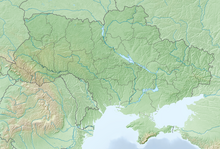
Year 1068 (MLXVIII) was a leap year starting on Tuesday of the Julian calendar.

Vsevolod I Yaroslavich was Grand Prince of Kiev from 1078 until his death in 1093.
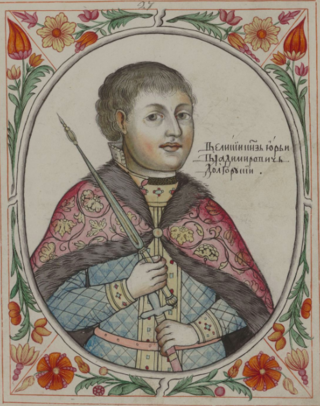
Yuri I Vladimirovich, commonly known as Yuri Dolgorukiy or the Long Arm, was a Monomakhovichi prince of Rostov and Suzdal, acquiring the name Suzdalia during his reign. Noted for successfully curbing the privileges of the landowning boyar class in Rostov-Suzdal and his ambitious building programme, Yuri transformed this principality into the independent power that would evolve into early modern Muscovy. Yuri Dolgorukiy was the progenitor of the Yurievichi, a branch of the Monomakhovichi.

Iziaslav Yaroslavich was Prince of Turov and Grand Prince of Kiev.
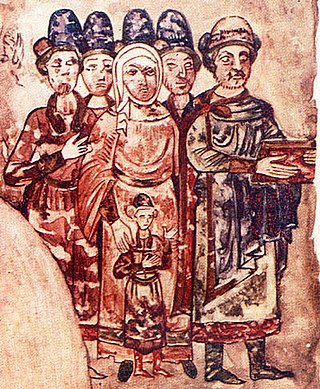
Sviatoslav II Iaroslavich or Sviatoslav II Yaroslavich was Grand Prince of Kiev from 1073 until his death in 1076. He was a younger son of Yaroslav the Wise, the grand prince of Kiev. He is the progenitor of the Sviatoslavichi branch of Rurikids.
Sviatopolk II Iziaslavich was Grand Prince of Kiev from 1093 to 1113. He was not a popular prince, and his reign was marked by incessant rivalry with his cousin Vladimir Monomakh.
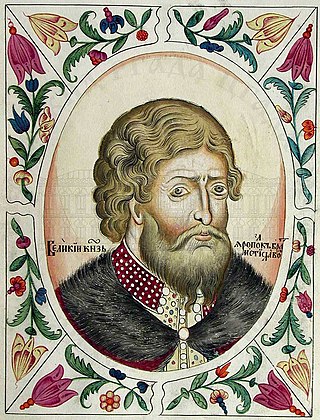
Yaropolk II Vladimirovich was Prince of Pereyaslavl (1114–1132) and Grand Prince of Kiev (1132–1139). He was a son of Vladimir II Monomakh and Gytha of Wessex. He fought in several campaigns against the Cumans, once in 1103 and again in 1116.
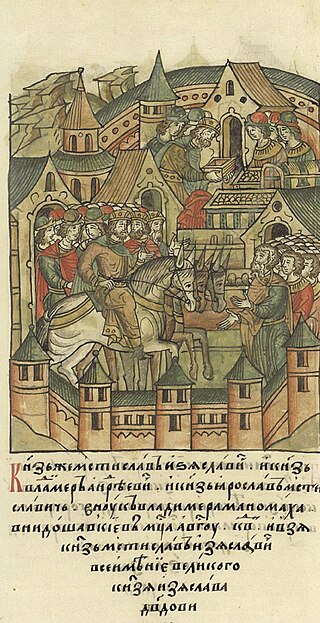
Mstislav II Iziaslavich was Grand Prince of Kiev from 1158 to 1159 and again from 1167 to 1169.

Vseslav Bryachislavich was Prince of Polotsk (1044–1101) and Grand Prince of Kiev (1068–1069). Together with Rostislav Vladimirovich and voivode Vyshata, they created a coalition against the Yaroslaviches' triumvirate. Polotsk's Cathedral of Holy Wisdom, completed in the mid-11th century, is one of the most enduring monuments from his reign and the oldest stone building in Belarus.

Rurik Rostislavich, also spelt Riurik was Prince of Novgorod (1170–1171), Belgorod Kievsky (1173–1194), Grand Prince of Kiev, and Prince of Chernigov (1210–1214).

Mikhail Vsevolodovich, known as Michael or Mikhail of Chernigov, was Grand Prince of Kiev ; he was also Prince of Pereyaslavl (1206), Novgorod-Seversk (1219–1226), Chernigov, Novgorod, and Galicia (1235–1236).
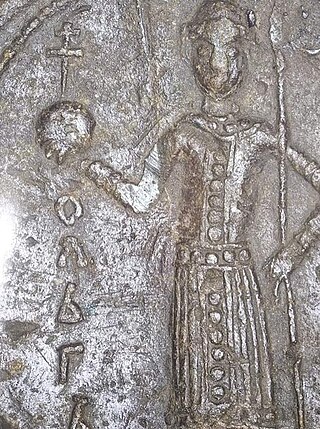
Oleg Svyatoslavich was a prince from Kievan Rus' whose equivocal adventures ignited political unrest in the country at the turn of the 11th and 12th centuries. He reigned as Prince of Chernigov from 1097 to 1115, and was the progenitor of the Olgovichi family.

Mstislav Mstislavich the Daring, also called the Able, was a prince of Tmutarakan and Chernigov, one of the princes from Kievan Rus' in the decades preceding the Mongol invasions.

Igor Svyatoslavich, nicknamed the Brave, was Prince of Novgorod-Seversk (1180–1198) and Prince of Chernigov (1198–1201/1202).

Boris Vyacheslavich was Prince of Chernigov for eight days in 1077. He was the son of Vyacheslav Yaroslavich, Prince of Smolensk. Following his father's death in 1057, the child Boris was debarred from his inheritance. He died fighting against his uncles—Vsevolod Yaroslavich, Prince of Chernigov and Izyaslav Yaroslavich, Grand Prince of Kiev—on 3 October 1078.
The Kiev uprising of 1068 was a revolt against Grand Prince Iziaslav Yaroslavich of Kiev in the aftermath of a Kievan Rus’ defeat at the hands of the Cumans at Battle of the Alta River near the city of Pereiaslavl, southeast of Kiev.

Yaropolk Iziaslavich was Prince of Turov and Prince of Volhynia from 1078 until his death.

The Council of Liubech was one of the best documented princely meetings in Kievan Rus' that took place in Liubech on October 19, 1097. The council ended the Chernihiv war of succession (1093–1097) between Sviatopolk II of Kiev, Vladimir II Monomakh and Oleg I of Chernigov who fought for the heritage of his father Sviatoslav II of Kiev.

The sack of Kiev took place on 8–12 March 1169 when a coalition of 11 princes, assembled by prince Andrey Bogolyubsky of Vladimir-Suzdal, attacked the Kievan Rus' capital city of Kiev during the 1167–1169 Kievan succession crisis. The conflict, caused by the death of grand prince Rostislav I of Kiev, was between rival branches of the Monomakhovichi clan: the Iziaslavichi of Volhynia on the one hand, and the Rostislavichi of Smolensk, the Yurievichi, and the Olgovichi of Chernigov on the other. Prince Mstislav II of Kiev sought to defend Kiev against the Rostislavichi–Yurievichi–Olgovichi coalition.
According to Jan Długosz's 1480 chronicle, Bolesław II the Bold conducted an expedition to Kiev around 1076 or 1077, in order to install Prince Iziaslav I on the Kievan Rus' throne after the death of Sviatoslav II of Kiev.

